How to design a natural swimming pool
Building a low-nutrient natural swimming pool will provide the perfect space to swim and relax and create a natural habitat for wildlife and flora in your garden
Wild swimming – be it rivers, tarns, lakes, ponds or oceans, has a myriad of physical and mental health benefits, and there’s been a recent uptick in bringing those benefits to your own home by installing a natural swimming pool. Natural pools also provide a habitat for a wide range of wildlife and will introduce biodiversity to your garden – especially important as our need to zone our gardens and re-connect with nature. The term natural swimming pool or swimming pond can be used interchangeably, as they both function in the same way.
And, how can anyone forget Grand Designs’ Nina and Dan Simon’s spectacular biodiverse waterside home in Chichester (season 22, episode 5), where they created a pool (main image) that they can dive off the deck outside their kitchen right into. It was a pool that sparked inspiration, when people realised the vast possibilities available to them with natural swimming pools in residential gardens.
Tim Evans from the fantastic Gartenart, the UK’s leading swimming ponds and natural swimming pools provider, talks Grand Designs’ through everything from how they work, to how to maintain them. Here’s how to take the plunge.
How do natural swimming pools work?
Tim explains that “a swimming pond or natural swimming pool is essentially a low-nutrient wildlife pond. It is similar biologically to a mountain lake, for example, where there is naturally very little nutrient input from the surroundings. In a garden setting we need to both a) minimise nutrients coming in from outside the system, and b) circulate the water through filter material to reduce the nutrient level as much as possible. In these low nutrient conditions the water is completely clear and there is very little algae growth.”
“Most swimming ponds have a regeneration zone as part of the planting zone, either surrounding or to one side of the swimming area. Usually the regeneration zone will be a deeper aggregate bed, with a specific material to reduce nutrient levels, through which the water circulates to keep the nutrient level low.”
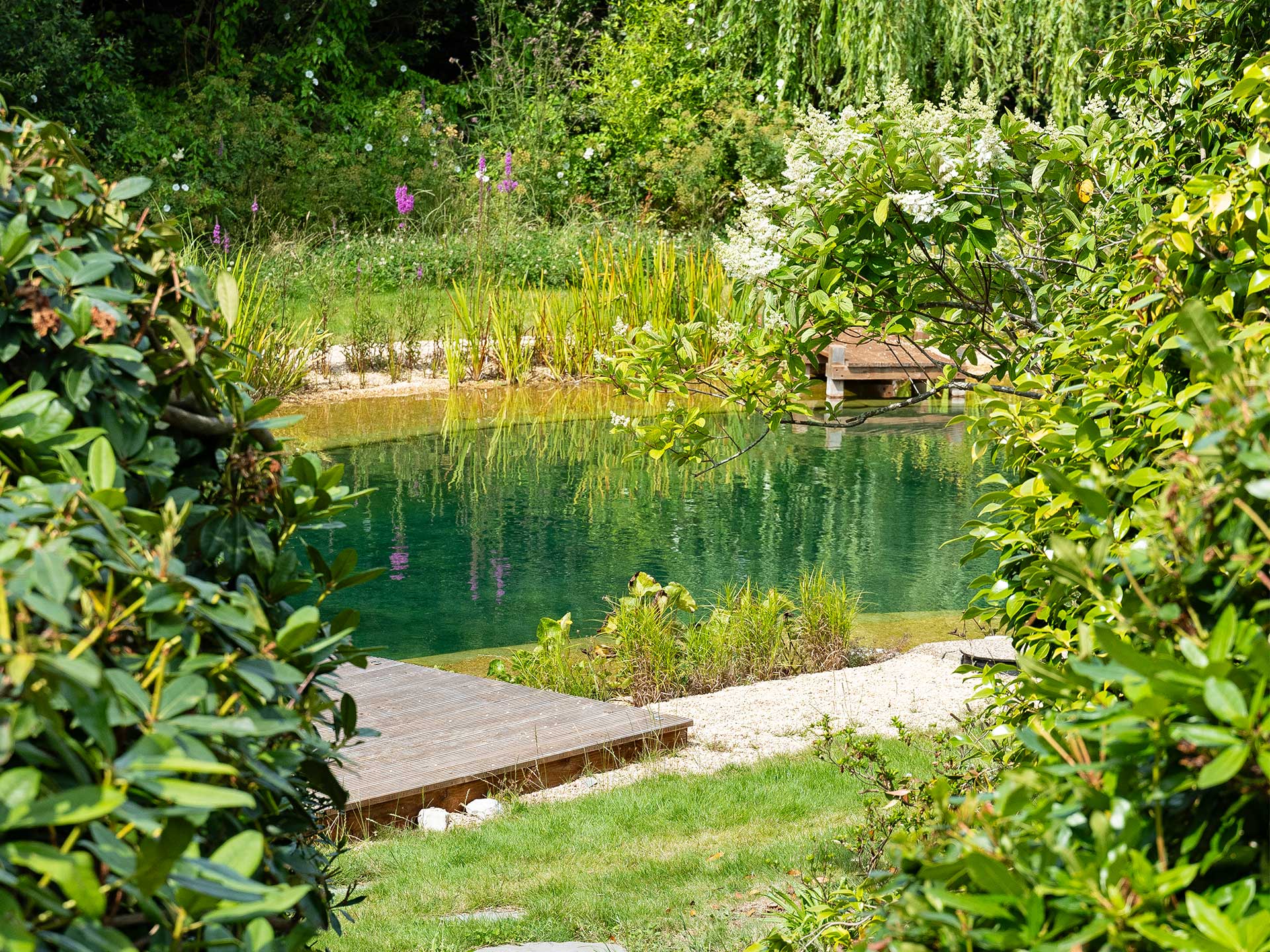
Image credit: Gartenart
What’s the best positioning for your pool?
When it comes to positioning, Tim says it’s “best to have a reasonably open location, and particularly not directly under tree branches. The ground should also be reasonably flat – it can slope to some degree, but obviously the more it slopes the more any banks or retaining structures will have a visual impact.”
He adds that “it is up to you whether you site it close to the house or further away – it depends how you are thinking of using it, and on other site factors”.
Think about shape you want too, dependent on your landscape and preference, there’s no rules with it. An irregular shape can be more in keeping with a wild pond and blend more naturally into its surroundings and is more frequently called a natural swimming pond. However, a more traditionally shaped rectangular pool is often called a natural swimming pool. Gartenart’s incredible portfolio showcases everything from natural pond designs to formal pool designs to pond and lake conversions.
What are their benefits?
Tim explains, how “a swimming pond is part of your garden – because it is alive it is constantly changing throughout the seasons and from year to year. We do not add anything which harms living organisms – our principle, as described above, is always to keep the nutrient level low. Because it is alive, but also healthy, the water has a presence to it which is very unlike conventional pool water or even sea water.”
“It has a quality which is almost meditative… you can appreciate this by being next to the pond, and particularly by getting in the water. People use different words to describe it – people commonly call the water ‘silky’. Gartenart has open days where you can test this out for yourself.”
“Another benefit has become more apparent in recent years with the increased interest in cold water immersion. In the summer a swimming pond is a swimming facility and social hub, and it looks beautiful. However in the winter it is a cold dipping pool, and more and more we find that clients are getting in all year round.”
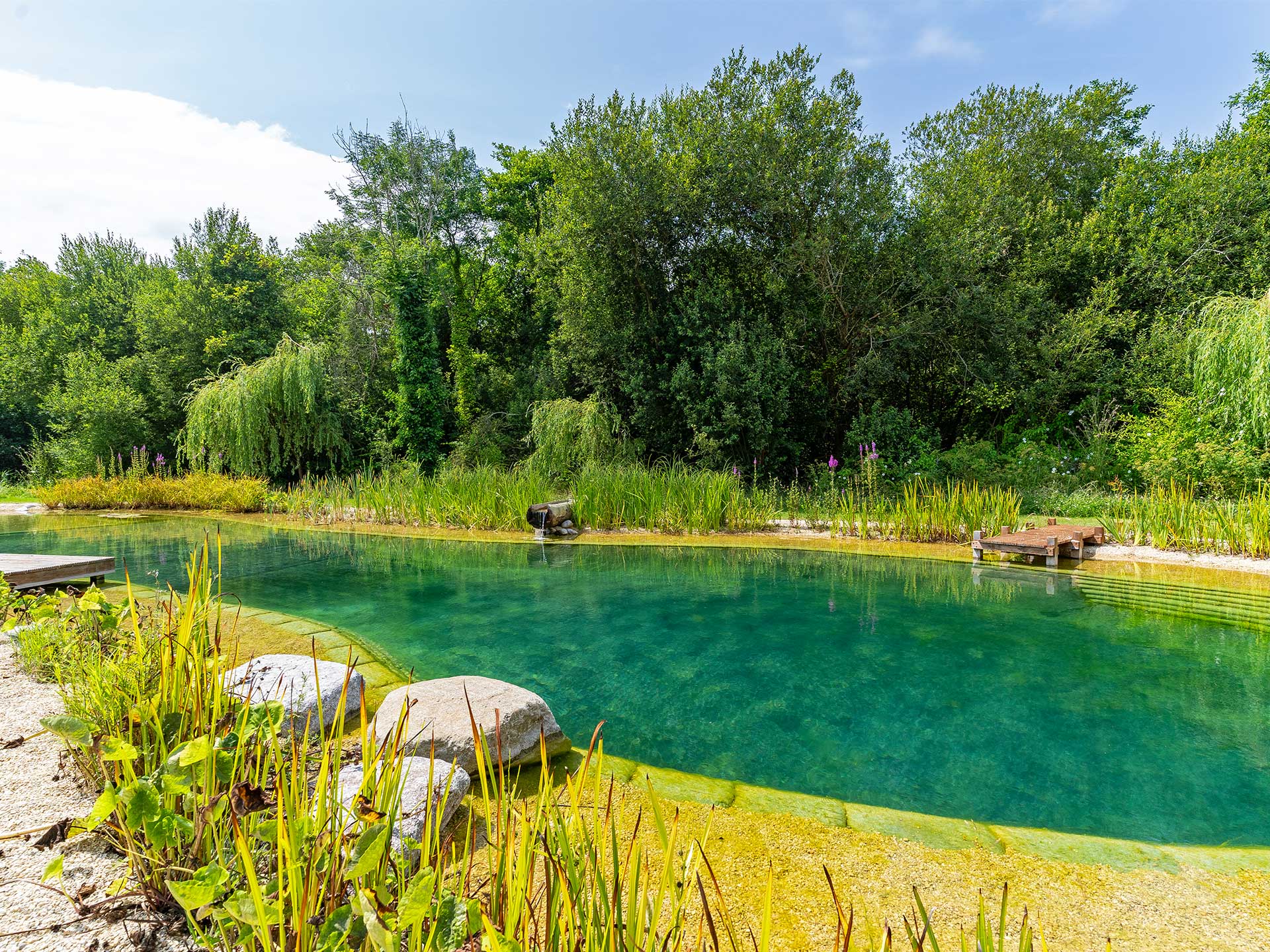
Image credit: Gartenart
Are natural swimming pools expensive?
The cost of installing a natural swimming pool depends on a lot of factors, but it is usually more expensive than a standard swimming pool. This is because natural swimming pools need more space for the planted areas and filtration systems.
The cost will depend on the size of the pool you require, the location and which materials you use. The larger the pool, the more expensive it will be to install.
Similarly, the location of the pool will have an impact on the cost. Installing a pool in an area that is difficult to access or has a high water table will make the process more challenging and as a result, more expensive.
The cost of materials for natural swimming pools has an impact, too. If you use natural stone or brick, this will be more expensive than those constructed with concrete.
Maintenance is an often overlooked cost, and will be more costly than a traditional swimming pool. This is because a natural swimming pool will rely on natural processes to purify the water, instead of chemicals and this can require more maintenance. For example, maintaining the pH levels of the water is more time-consuming, and the planted areas will need regular maintenance.
Can you heat a natural swimming pool?
Yes, you are able to heat your natural swimming pool. This can extend the time that you are able to comfortably use it, but the process requires a lot of considerations and can be tricky.
Natural swimming pools are usually warmer than traditional ones, but if you’re wanting to use it during the colder months, it might be worth investing in a heating system. The ecosystem of your pool will also need to be considered, to minimise the ecological disruption of the plants and other natural life inside.
What are the heating options?
There are a few different heating options you can consider for your pool including a solar heater, heat pump, gas heater and solar cover.
A solar heater is the most popular option as it is eco-friendly, using solar panels to capture the suns energy to heat the water. This is cost-effective if you live in a sunny region, and pays itself off in a few years. However, if you live somewhere cloudy, another option might be better suited.
Heat pumps are a great alternative. These work by extracting heat from the air using electricity, and then transferring it to the water. This is a slow process but is highly efficient, and will even work in colder climates, as long as the outside temperature is around 7°C.
The quickest way to heat your natural swimming pool is by using a gas heater. These burn natural gas as the water pumps through the filter to warm the pool, it is the most effective way to heat it if you live in a colder country.
Finally, a solar cover is the final option. This is a great way to heat your pool if you live in a warmer climate, this works by covering the pool with the solar cover when you are not using and trapping the heat in. The covers can be tricky to deal with, but it’s by far the cheapest method to heat a natural swimming pool.
Other considerations
While considering options for heating your pool, remember that smaller and shallow pools will absorb and retain heat better. This means you won’t have to spend as much to keep your pool warm.
If you haven’t built the pool yet, think about locating it somewhere where it will get maximum sun exposure. If it’s already built, think about your gardens landscaping to maximise the pool’s exposure to the sun, however bare in mind this will mean you have more algae.
You should also protect your pool from the wind using a plant or physical barrier to prevent it from cooling the water, and remember to cover the pool over at night.
Finally, remember the swimming pool won’t ever be able to be the perfect temperature, as it needs to be comfortable for the plant life, too. Aquatic plants will be impacted negatively if the pool is heated above 32°C so try to keep the temperature in the 20s if possible.
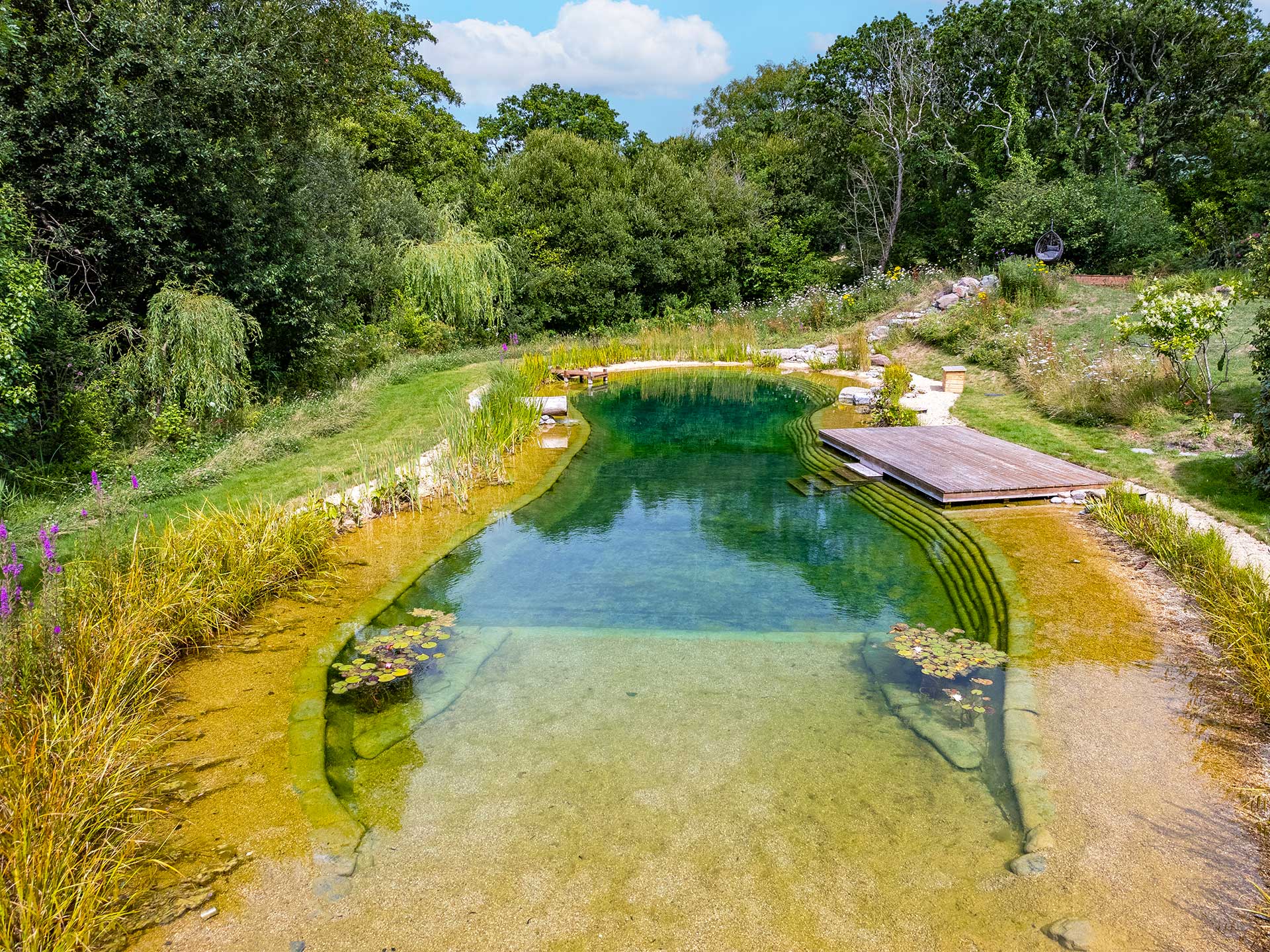
Image credit: Gartenart
Can you turn a pond into a natural swimming pool?
Yes, your pond can be converted into a natural swimming pool, but it will be expensive and hard work.
You may think converting your pond is a cheaper option than building a natural pool from scratch, but there is probably less difference than you think.
Converting your current pond will still require a lot of work. This includes: preparing the area, acquiring the materials, cleaning and draining the pond, installing a pump and filtration system, installing a pond liner, filling your pool with gravel and water, and adding the necessary plant life.
Do natural swimming pools attract mosquitoes?
While chlorine and chemicals tend to help keep mosquitoes away from traditional swimming pools, a natural one won’t have this benefit.
A natural swimming pool will clean itself with the help of a natural ecosystem. This is made up of filtering plants, which clean the pool without the need of chemicals. However, due to the fresh water, a pond with minimal circulation can become a breeding ground for mosquitoes.
Thankfully, most natural swimming pools will use one or more pumps to assist with filtration. These will provide circulation like a traditional pool to prevent stagnation. Some pools will also have a pump to clean the surface of the water, which will also stop mosquitoes laying their eggs.
Although, if the circulation system breaks down, a natural pool could attract mosquitoes due to its natural bioburden so it’s important to get the pump working again as quickly as possible.
As mosquitoes thrive in high humid environments, they could be found even when the pool is functioning normally.
You can prevent them bothering you by removing any debris to keep the pool clean, and avoiding swimming early in the morning and late at night when mosquitoes are most active.
Adding plants that repel mosquitoes to your natural swimming pool plant life can also be helpful: citronella, mint, rosemary, lavender and marigolds will all add colour and help to keep them at bay.
Making sure your pool is built to drain water away will also help, as well as keeping pool toys, wooden decks, chairs and other objects dry.
If you’re still struggling, having a fan near the pool will also help as mosquitoes detest wind.
Do you need to get planning permission for a natural swimming pool?
Planning permission is not usually needed to create a natural swimming pool in your garden. Two of the main criteria to look out for that could require planning permission are if you live in a listed building or if your property is within an Area of Outstanding Natural Beauty (AONB). If you do require it, Gartenart is experienced in getting planning permission and can help advise with specific situations.
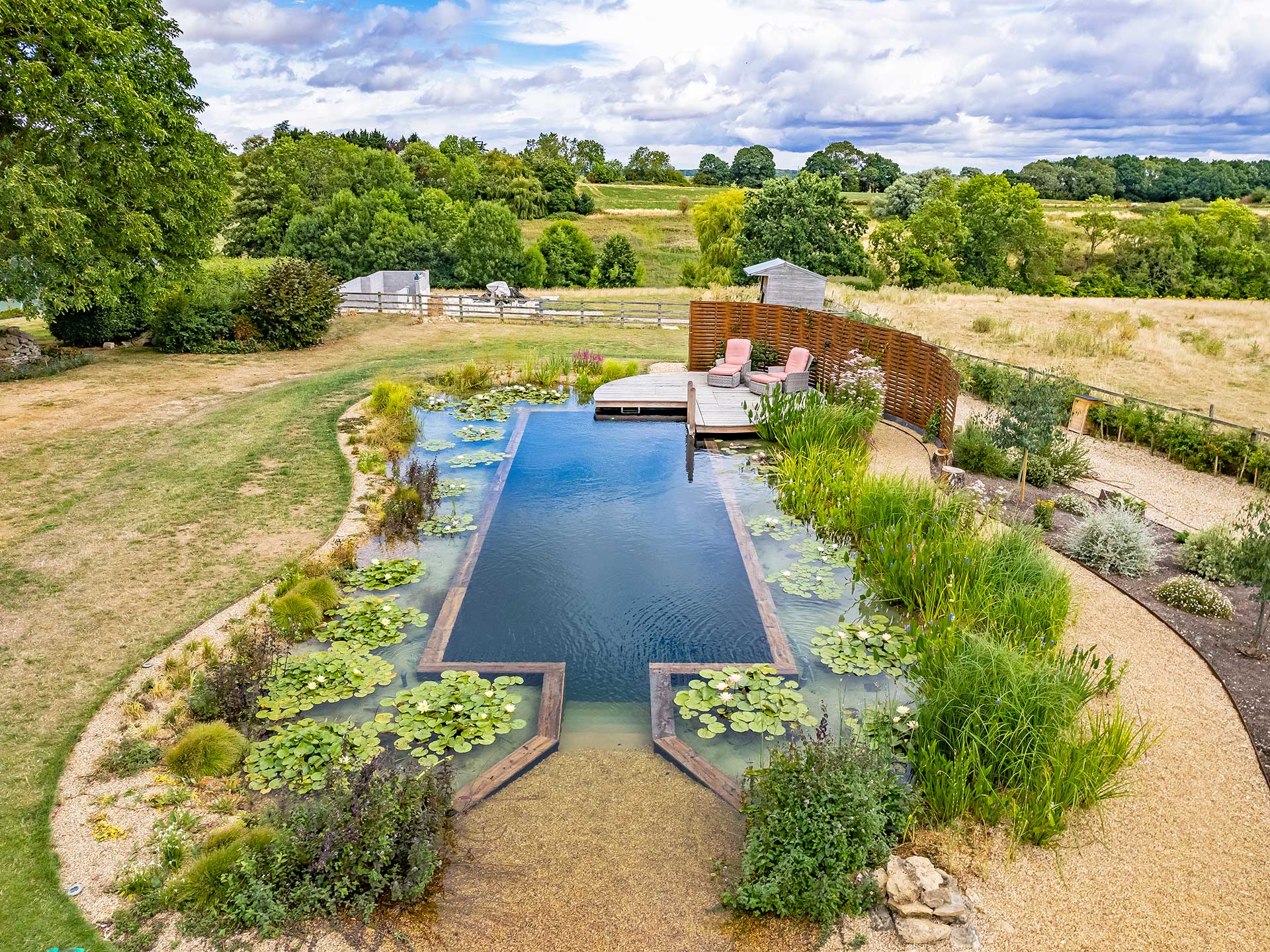
Image credit: Natural Swimming Pools
What should you plant in and around them?
When it comes to planting, Tim explains that “in the water you should plant water plants which do well in low-nutrient conditions. For example we use Iris pseudacorus, Typha gracilis, Carex acuta, Lythrum salicaria, Caltha palustris, and many others.”
“Outside the water and around the pond you can plant grasses or other land plants if you want to create a fuller look. However after a few years the swimming pond plant growth will be quite thick so you wouldn’t need the plants around the outside”.
David Pagan Butler from Organic Pools adds that “plants are an obvious ally in maintaining water quality in a natural pool, but the importance of the small creatures and microorganisms should not be overlooked, as they are crucial to maintaining clean water.”
“I visualise that my pool is filled with the freshwater equivalent of bio yoghurt. Every niche is filled with beneficial microorganisms keeping the water healthy and fresh. It is important that the circulation system doesn’t impair the effectiveness of these microflora and fauna. That’s one of the reasons why my pools use bubbles to gently move the water.”
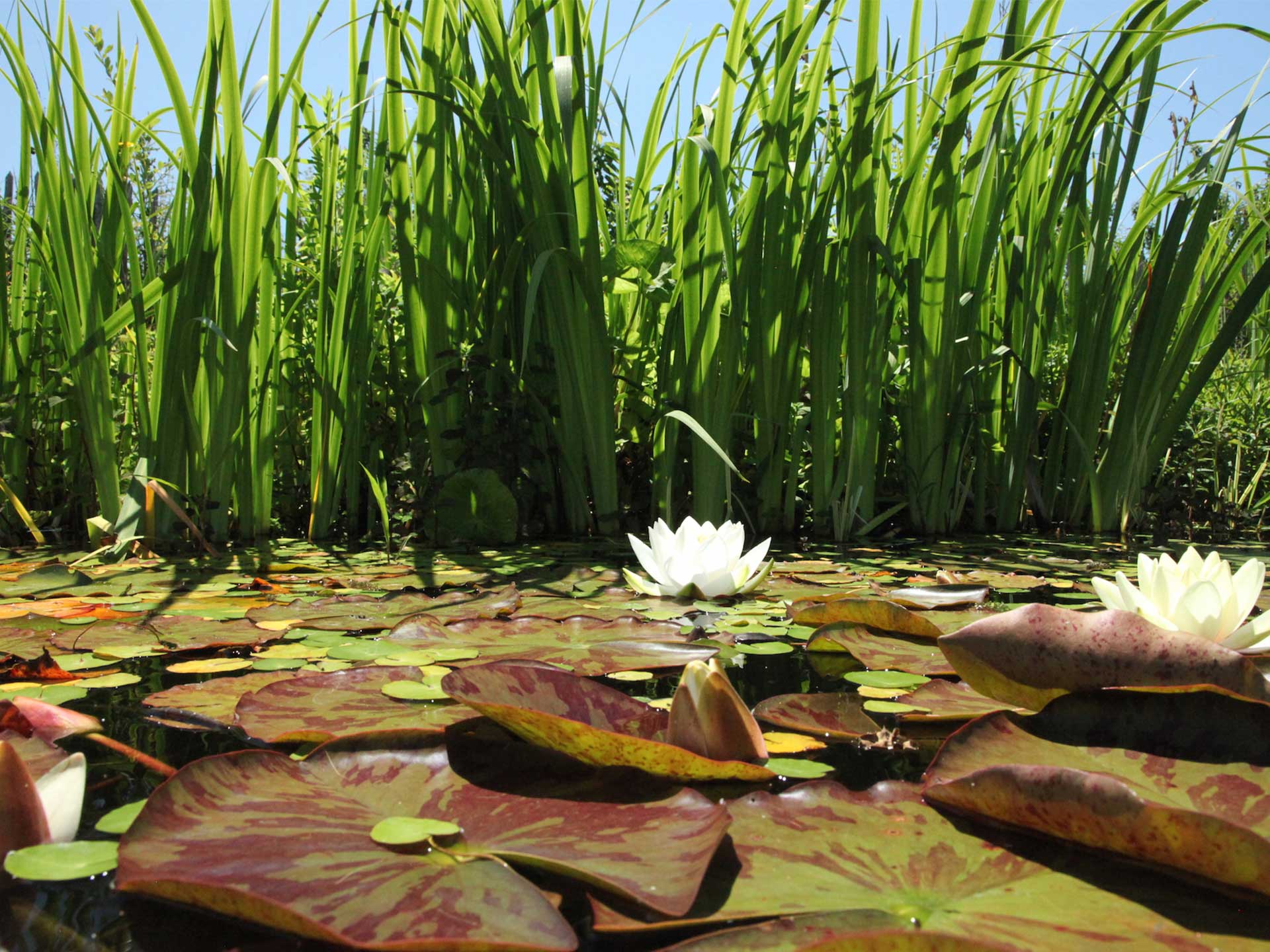
Image credit: David Pagan Butler
How to maintain your natural swimming pool
Tim talks us through pool maintenance: “We always say a swimming pond needs half a day of maintenance per month. Less for smaller ponds, two – three hours per month and more for larger ponds, around four to five hours per month.”
“GartenArt has a team which can do this, or you or your gardener can do it. Maintenance mainly consists of brushing the surfaces and vacuuming out any debris which has accumulated at the bottom.”
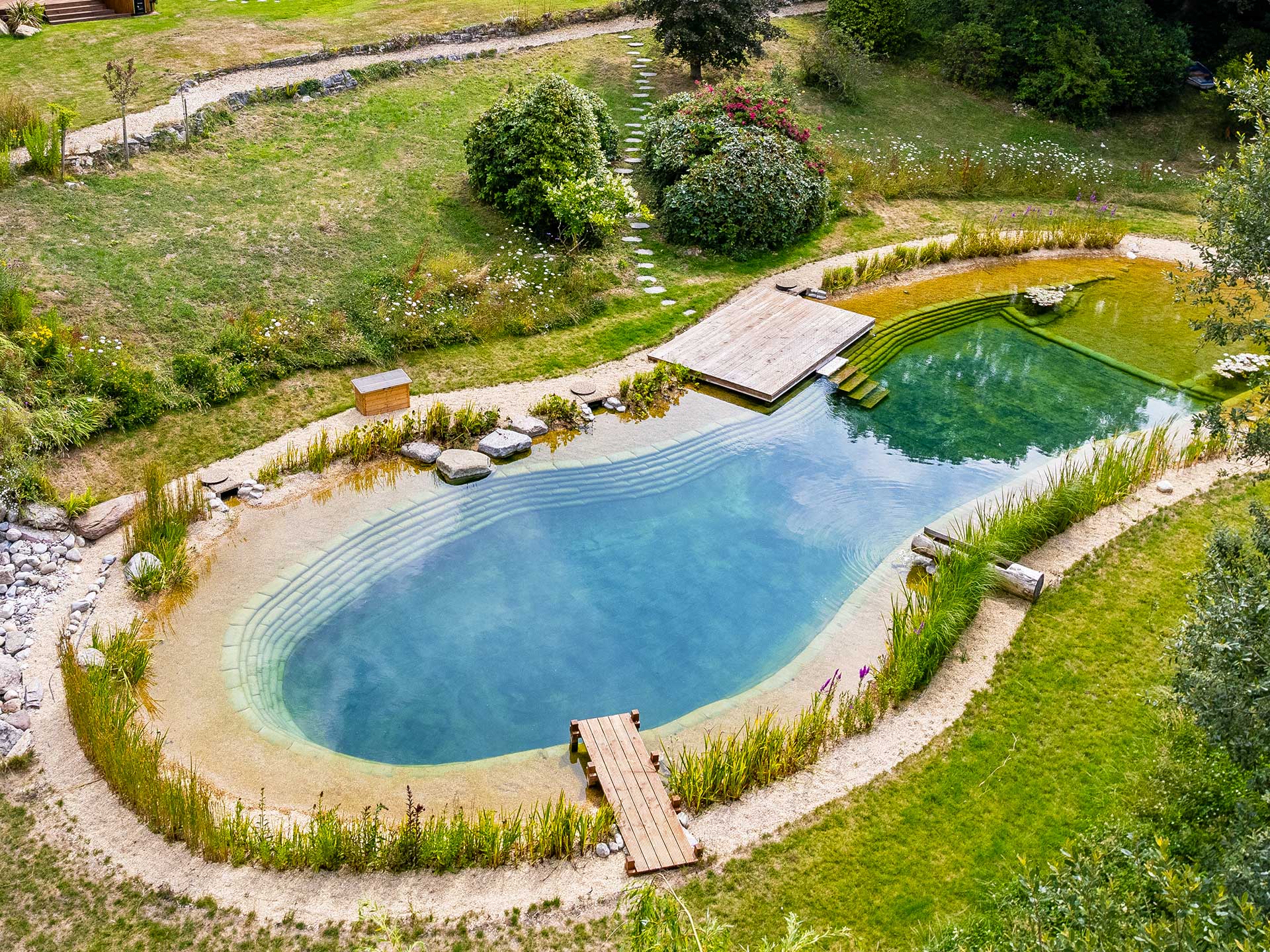
Image credit: Gartenart
How did Grand Designs’ Nina and Dan create their natural pool?
“The couple wanted their Grand Designs Chichester pond house to promote wellness and relaxation, partly inspired by a forest spa they had visited in Thailand, where walkways weave around boulders, with pools of water have a calming effect.”
“The swimming pond has two parts separated by an underwater wall – a swimming zone and a regeneration zone with areas of gravel and clay,” explains Dan. “Water filters through the gravel and is pumped through a network of pipes to prevent stagnation. Plants growing in the clay feed off nutrients in the water, preventing algal bloom and keeping the water crystal clear.”
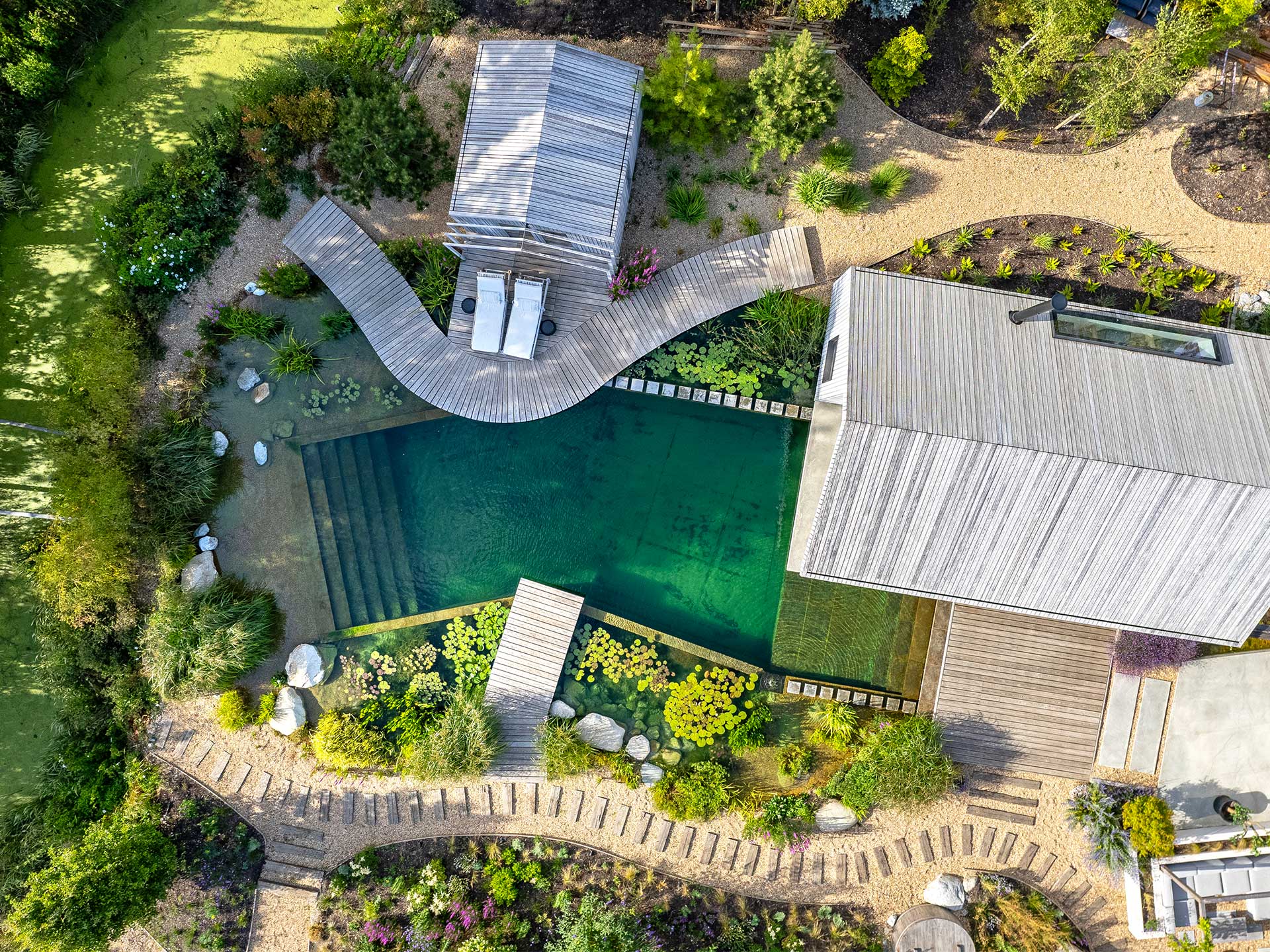
Image credit: Natural Swimming Pools
READ MORE








